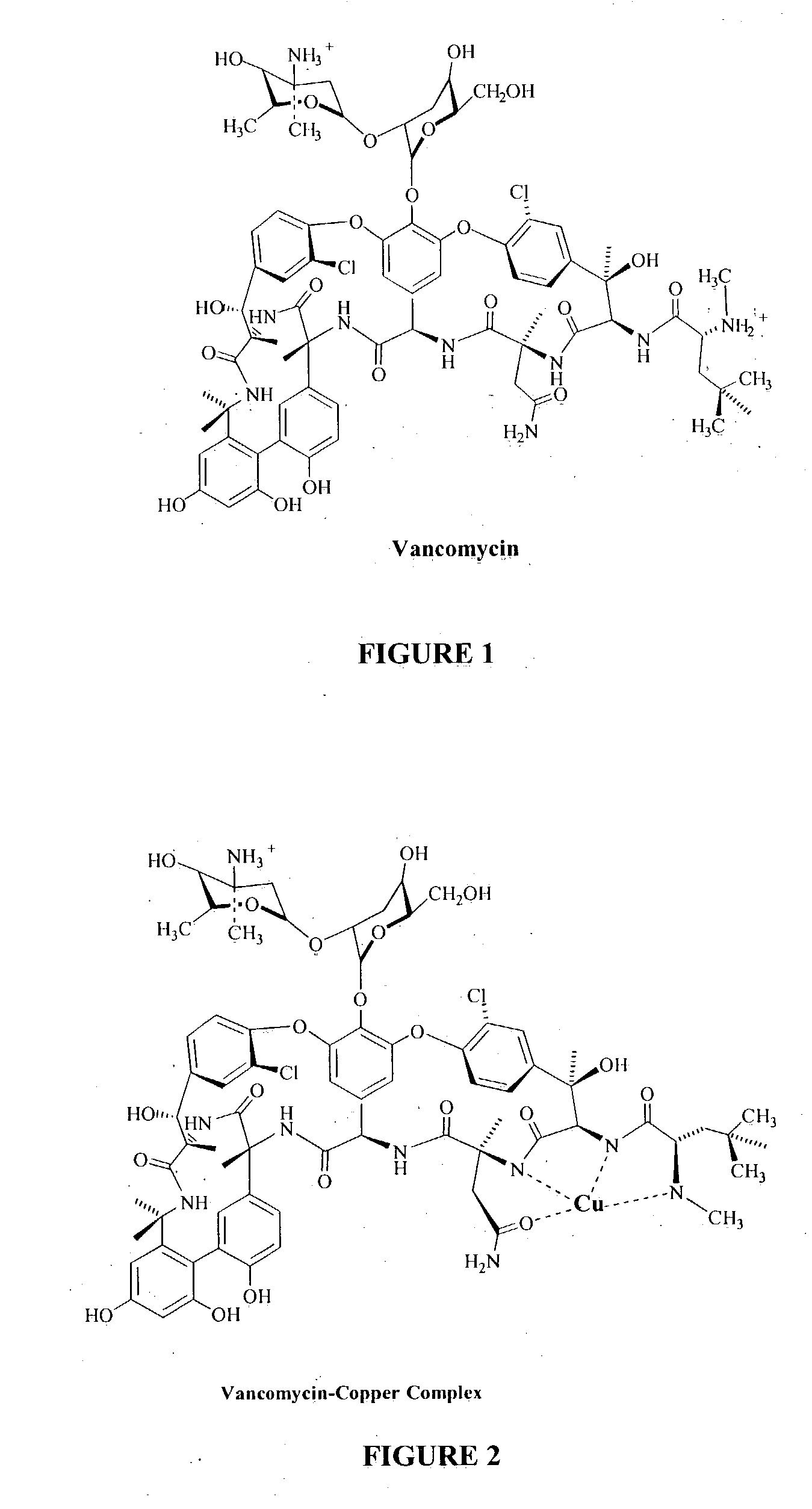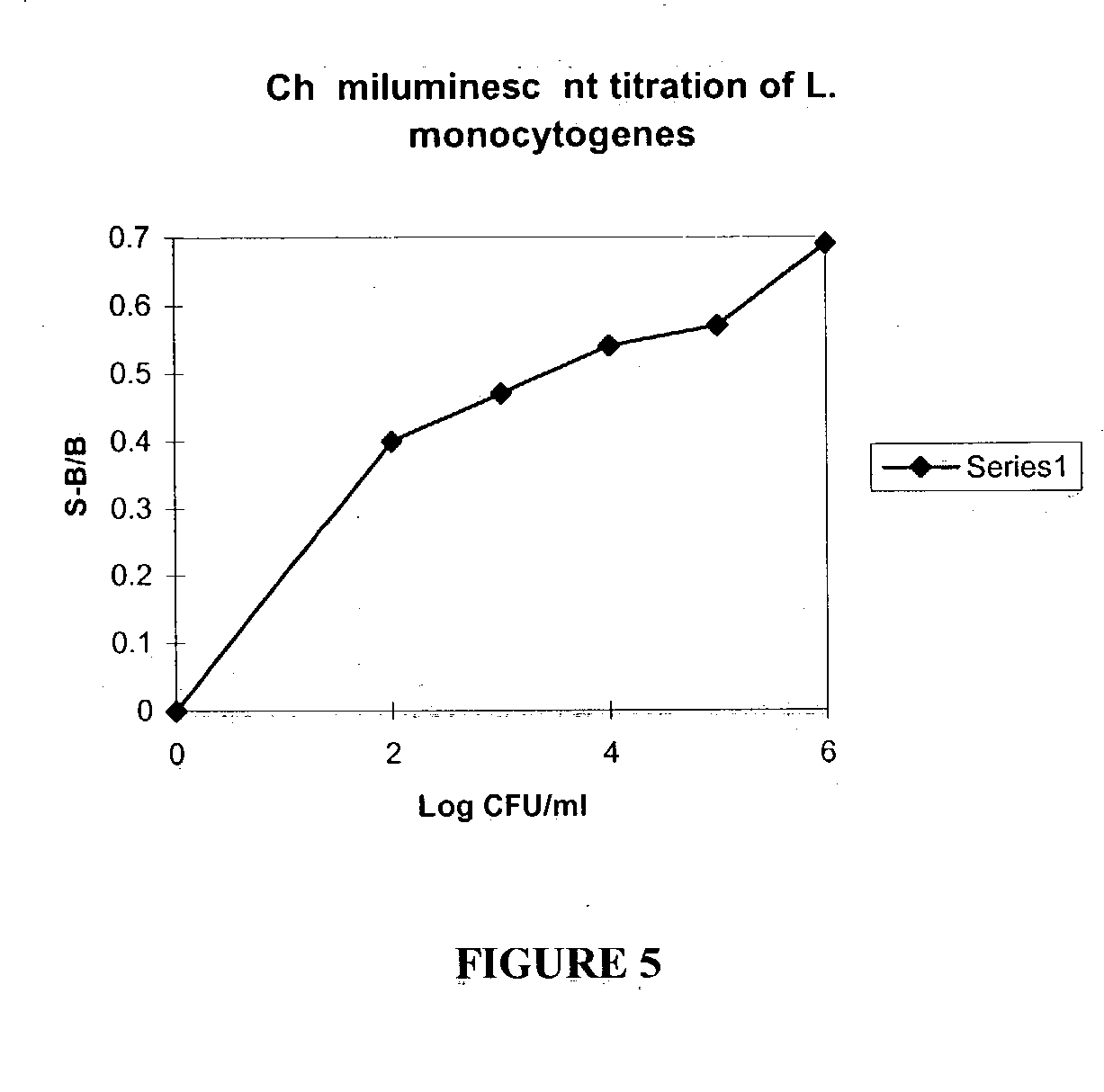Antibiotic-metal complexes in the detection of gram-positive bacteria and other biological analytes
- Summary
- Abstract
- Description
- Claims
- Application Information
AI Technical Summary
Benefits of technology
Problems solved by technology
Method used
Image
Examples
example 1
Preparation of the Cobal Complex
Vancomycin (purchased from Aldrich Chemical Co.), 0.05 mmoles, 0.075 g was dissolved in 8 mL of 0.05 M acetic acid. One equivalent of cobalt chloride, 12 mg, was added in 0.25 mL of the same buffer. The complex was stirred at room temperature for thirty minutes and gel filtered on Sephadex G-25 to remove unbound cobalt. The fractions absorbing at 400 nm were pooled and freeze dried. Electronic spectra of the free antibiotic and complex are depicted in FIG. 4. These results demonstrate that vancomycin readily forms a complex with cobalt, and that once formed, the complex can be easily isolated.
example 2
Chemiluminescent Cell Titration of Listeria Monocytogenes
Bacteria were diluted in sterile 0.1% peptone from cell concentrations of 107 CFU / mL to 10 CFU / mL. The cells were treated with the vancomycin-Co(II) complex of Example 1 using a concentration of 10 μg / mL for twenty minutes at room temperature. Unbound complex was removed by washing, as follows: the cells were centrifuged, rinsed with 0.5 mL peptone; re-centrifuged and re-suspended in 0.1 mL peptone. Chemiluminescence was measured using 0.2 mL of Luminol reagent purchased from NEN Life Sciences (Boston, Mass.) and using a Luminator® luminometer. FIG. 5 shows the titration curve for the cells. The lowest detectable Listeria cell concentration is estimated to be 10 to 100 cells per sample.
PUM
| Property | Measurement | Unit |
|---|---|---|
| Antimicrobial properties | aaaaa | aaaaa |
| Fluorescence | aaaaa | aaaaa |
| Magnetism | aaaaa | aaaaa |
Abstract
Description
Claims
Application Information
 Login to View More
Login to View More - R&D
- Intellectual Property
- Life Sciences
- Materials
- Tech Scout
- Unparalleled Data Quality
- Higher Quality Content
- 60% Fewer Hallucinations
Browse by: Latest US Patents, China's latest patents, Technical Efficacy Thesaurus, Application Domain, Technology Topic, Popular Technical Reports.
© 2025 PatSnap. All rights reserved.Legal|Privacy policy|Modern Slavery Act Transparency Statement|Sitemap|About US| Contact US: help@patsnap.com



